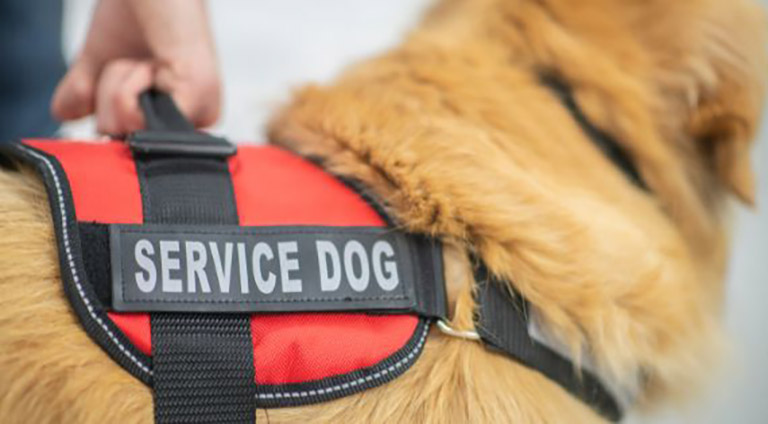Curious about how your dog always seems to sense your mood, whether it’s snuggling up to comfort you or eagerly joining in your excitement? The secret lies in their remarkable ability to understand and respond to human emotions. This blog delves into the profound connection between humans and dogs, uncovering how canines effortlessly read human emotions, the positive impact this has and the potential pitfalls of emotional transference.
The Bond Between Humans and Dogs
For millennia, dogs and humans have shared an extraordinary bond that surpasses mere companionship. This deep connection dates back thousands of years, evolving from dogs’ roles as loyal guardians and invaluable hunting partners to cherished members of our families as civilization advanced. Their seamless integration into our lives is a testament to their adaptability and the profound depth of our bond, rooted in mutual trust, loyalty, and an intuitive understanding that transcends species barriers. Dogs possess an innate ability to connect with us on an emotional level, offering solace during times of sorrow and sharing in our joyous moments. This enduring partnership highlights the power of interspecies connection and the remarkable capacity for love and empathy between dogs and humans.
Central to this bond is dogs’ remarkable ability to combine both sound and visual emotional cues, a skill honed through generations of domestication. As highly social animals, dogs have evolved to detect and respond to human emotions, a trait that has facilitated their ideal integration into human households. When a dog senses emotional distress in their human companions, whether it be sadness or a need for assistance, they are instinctively driven to offer comfort, often experiencing heightened stress if they are unable to do so. This sensitivity stems from dogs’ pack mentality, as they are naturally inclined to protect and remain loyal to their tight-knit group or “pack.”
Scientific research confirms what many dog owners have long suspected: dogs possess an uncanny ability to sense and respond to human moods and emotions. This special gift further strengthens the bond between dogs and their human companions, enhancing our understanding of each other’s emotional states and deepening the connection we share.

How Dogs Can Sense Human Emotion
Watching Body Language and Facial Expressions
Dogs possess an extraordinary knack for deciphering the subtle nuances of human body language and facial expressions, allowing them to tune in to our emotions with remarkable precision. It’s as if they have an innate sixth sense for understanding our innermost feelings simply by observing our posture, facial expressions and movements.
For instance, when we’re feeling happy and relaxed, our bodies emit cues such as relaxed muscles, open gestures and smiles — all of which signal to our canine companions that everything is good in our world. Conversely, when we’re tense, anxious or fearful, our bodies communicate a different story: hunched shoulders, furrowed brows and averted gazes send signals of distress that dogs are quick to pick up on.
What’s truly fascinating is not just their ability to detect these outward signs of emotion, but their intuitive response to them. Dogs often mirror our emotional states, offering comforting cuddles or gentle nudges when they sense we’re feeling down and bounding with excitement when they sense our joy.

Hearing Tone of Voice
In addition to their acute sensitivity to our body language and facial expressions, dogs possess a remarkable ability to interpret the nuances of our tone of voice, further deepening their understanding of our emotional states. It’s as if they have an internal translator for human vocal cues, allowing them to discern the subtle variations in pitch, intonation and cadence that convey the depth of our feelings. Whether it’s the lilting melody of laughter or the gut-wrenching sobs of sadness, dogs can distinguish between positive and negative sounds with astonishing accuracy.
Positive tones, like cheerful greetings or affectionate praise, elicit wagging tails and joyful responses, affirming their association with pleasant experiences. Conversely, negative tones, such as raised voices or distressed cries, trigger a different response altogether, stirring feelings of concern and prompting dogs to offer comforting gestures or seek reassurance. What’s particularly intriguing is that dogs seem to be more attuned to negative sounds, reacting with heightened arousal and urgency in response to signs of distress from their human counterparts.
Smelling Emotional Changes
A dog’s nose grants them a unique window into our emotional world. Their highly developed sense of smell enables them to perceive subtle changes in our body odor that correlate with our shifting emotional states. When we experience fear, anxiety or excitement, our bodies emit chemical signals that dogs can readily detect, thanks to their sensitive noses. These olfactory cues serve as a form of emotional communication, conveying information about our innermost feelings that may not be readily apparent through other means.
For instance, when we’re fearful, our bodies release adrenaline and other stress-related hormones, which alter our scent profile in ways that dogs can discern. Similarly, moments of excitement are accompanied by changes in body chemistry that dogs can pick up on, signaling to them our heightened state of arousal. By tuning into these signals, dogs gain insight into our emotional well-being, allowing them to respond with empathy and support.

Expressing Empathy
Dogs’ capacity for empathy is perhaps one of the most endearing aspects of their nature, reinforcing the notion that they are not just pets, but cherished members of our families. Much like humans, dogs possess the remarkable ability to sense and respond to the emotional states of their human companions with an uncanny level of understanding and compassion. When we’re feeling sad, upset or distressed, our dogs often seem to instinctively know, offering solace in the form of gentle cuddles, soothing licks or simply by lying quietly by our side providing silent support. It’s as if they possess an emotional radar attuned to our innermost feelings, allowing them to respond with empathy and comfort in our times of need. Moreover, dogs’ empathic abilities extend beyond just emotional states; they can also detect when their humans are in physical pain, demonstrating a heightened sensitivity to our well-being that goes beyond mere instinct.
The Impact of Dogs in Disaster Relief and Trauma Support
The remarkable ability of canines to sense and respond to human emotions is not only a testament to the depth of our bond with these extraordinary animals but also a valuable resource in the realm of therapy and service work. Their innate empathy and keen sensitivity to our emotional and physical cues make them exceptionally well-suited for roles as therapy and service dogs, providing invaluable support to those facing mental health challenges or navigating through the aftermath of traumatic events. For individuals grappling with conditions such as PTSD, anxiety or depression, the presence of a therapy dog can offer a sense of calm and comfort, serving as a constant source of reassurance and companionship during difficult times. Likewise, in disaster areas or sites of trauma, therapy dogs play a vital role in providing solace and emotional support to survivors and victims, helping to ease their distress and restore a sense of normalcy amidst chaos

The Double-Edged Sword of Emotional Transference
While dogs’ ability to sense and respond to human emotions is undoubtedly a remarkable trait, it’s important to recognize that this sensitivity can sometimes have unintended consequences, particularly if we project negative emotions onto them. Dogs are highly attuned to our emotional state, and they often mirror our feelings, whether it’s happiness, sadness, anxiety or anger. This means that when we’re feeling stressed, anxious or upset, our dogs are likely to pick up on those emotions and may become nervous or agitated themselves.
For example, a trip to the veterinarian or grooming salon can be a source of anxiety for both humans and dogs alike. If we approach these situations with apprehension or agitation, our dogs are likely to mirror those feelings, making it harder for veterinary staff or groomers to handle them effectively. Similarly, if we overcompensate by showering our dogs with excessive comfort or reassurance, they may interpret our behavior as a signal that something is wrong, leading to increased anxiety or stress. In the long run, constantly projecting negative emotions onto our dogs can have detrimental effects on their well-being, potentially leading to behavioral issues or heightened levels of stress and fear. Therefore, it’s essential for dog owners to be mindful of their own emotional state and strive to remain calm, confident and composed, especially in challenging situations.

All About Balance
The bond between humans and dogs is a testament to profound connection and enduring resilience. Through their remarkable ability to sense our emotions, dogs pay close attention to our body language, facial expressions, tone of voice and even our scent. Utilizing their natural empathy, they offer comfort in times of sorrow and celebrate with us in moments of joy. This extraordinary ability has led to the invaluable role of dogs as therapy and service animals, providing support and assistance to those in need. However, it’s crucial to recognize that dogs not only perceive when we are sad or happy but also when we are angry, frustrated or fearful. These emotions can affect our furry companions as well, contributing to their overall stress and anxiety. Understanding this strong connection can help us regulate our own emotions while still appreciating the comfort and companionship offered by our beloved dogs.



